|
Disclaimer: This blog talks a lot about Amazon, but we are not connected to them in any way other than they sell our books. We are definitely not being paid to mention their name and we are not recommending Amazon. We are just recounting our experiences in the hope of passing on some of the knowledge we have gained. 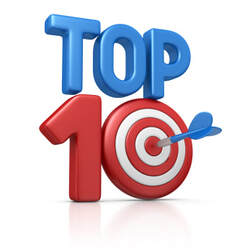 As an author who sells through Amazon, you will know all about “sales ranking”. If your book sells, the ranking improves and people are encouraged to buy your book because other people have bought it. And if your ranking is low, people think your book isn’t any good because other people aren’t buying it - but that is flawed logic. Just because a book isn’t selling it doesn’t mean it isn’t any good. It may just mean that nobody knows about it (we blogged about advertising last week, so we’re not going to go back over old ground). But you won’t convince some readers that a book is good if it isn’t selling and there’s not much we can do to change that mindset.  We have been fortunate over recent weeks that several of our books have sold well and their sales rankings have improved exponentially. Instead of being in the 7 digit ranking range they are into the lower end of the 5 digit range – and are still climbing. That’s for their overall, ranking of course, not the category ranking. In some obscure categories its possible to be the No 1 bestseller just by selling a single copy. So that isn’t a good comparison for the purposes of this blog. But we believe our books’ rankings should be higher still and we also believe that the way Amazon calculates their rankings doesn’t take into account a whole raft of “sales” through their own platform. I’m referring to Kindle Unlimited (KU) pages read. While they may not be direct sales, the way that a book is sold, the reader is still paying to read the book through their KU subscription and the author is still getting an income from those page reads. So, it is our contention that those page reads should be included in the calculations of sales rankings, which are an indication of the popularity of the book. KU page reads account for about two thirds of all our sales income (more for some individual titles). It is the equivalent of a lot of books sold. But Amazon doesn’t count them and there is no valid reason, as far as we can see, why they shouldn’t. In fact, it might actually be to Amazon’s benefit to include KU pages read, because the more popular a book, the more copies it sells and the more money Amazon will make from those sales. They are, effectively, depriving themselves of potential income with their current policy. I’ll use just one of our titles as an example of what we mean. "Our guestimate is that it would put the book into the top 1,000" But before we go on, a quick bit of jargon busting, for those of you who might need it. KENP means Kindle Edition Normalised Pages. It is the number of pages that Kindle Direct Publishing uses to calculate an author’s royalties for KU downloads. The more pages read in a book, the more the author gets paid. It is used to factor in the different font sizes and line spacings that authors use, which makes direct comparisons between the number of pages in a book problematic. We’re not sure how the KENP for a book is arrived at, but we suspect it may be based on character or word counts Mansplanation over, back to the blog. 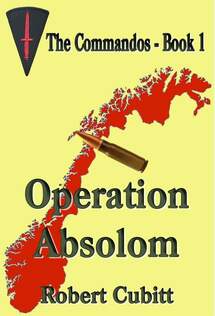 Operation Absolom is the first book in Robert Cubitt’s “Carter’s Commandos” series. In July 2022 it sold 11 copies. This elevated it to around 30,000 in the Amazon rankings at the time. Although Operation Absolom is 296 pages long in paperback, its KENP is 437 pages. During July 2022, 19,215 KENP pages were read using KU. Divide 19,215 by 437 and it works out at 34 complete books. So, if 11 books sold gives Operation Absolom an average sales ranking of about 30,000, what would another 17 books give it if they were included in the figures? (BTW it actually peaked at around 10,000 - 7/7/22) Our guestimate is that it would easily put the book into the top 1,000, which makes the book look very popular indeed – as it is in reality. OK, we’re not talking J K Rowling or Lee Childs popular, but it is a lot more popular than a million other books on Amazon. "Perhaps weight of numbers might encourage a shift in policy" We could quote similar figures for the rest of the Carter’s Commandos series, because once people have read the first book it is clear they are then reading the rest of the series. But you get the idea from the one title we have used as an illustration. But it doesn’t look like that on Amazon. So, what can we do about it? We have already emailed Amazon to ask them why they won’t change the way they calculate their sales rankings. After all, they have all the data to hand and doing a new calculation that includes KENP would hardly be rocket science. This was their reply: “Sales rank is determined by a number of different inputs and may change over time. Amazon is constantly working to improve the quality of information available to our readers and authors. Please note that Sales Rank fluctuates every hour in line with customer demand and in relation to the demand for other books, both of which may vary based on factors such as popularity of new releases, seasonality, etc. Rankings reflect recent and historical activity, with recent activity weighted more heavily. Rankings are relative, so your sales rank can change even when your book's level of activity stays the same. For example, even if your book's level of activity stays the same, your rank may improve if other books see a decrease in activity, or your rank may drop if other books see an increase in activity. When we calculate Best Sellers Rank, we consider the entire history of a book's activity. Monitoring your book's Amazon sales rank may be helpful in gaining general insight into the effectiveness of your marketing campaigns and other initiatives to drive book activity, but it is not an accurate way to track your book's activity or compare its activity in relation to books in other categories. Thanks for taking time to share your thoughts about considering KENPC in sales ranking calculation. Customer feedback like yours is very important to helping us continue to improve our products and services. I appreciate your thoughts and will be sure to pass your suggestion along. Please refer to our Sales Ranking Help page for information regarding Sales Rank - https://kdp.amazon.com/help?topicId=A21KM4BNAD42EJ”  Amazon sales data - just the tip of the iceberg. Amazon sales data - just the tip of the iceberg. We emailed back to them, saying that they were undermining their own reply. If tracking the effectiveness of marketing is an important use of sale rankings, then Amazon should surely be doing its best to maximise its utility by including KENP data, because that fluctuates in response to marketing activity as well I also pointed out that by not including KENP, they were showing customers the tip of the iceberg, not the whole iceberg. They did reply once more, but only to provide platitudes. But if you are an author and your books are read using KU, then this is something that you should be concerned about as well. So why don’t you add your voice to ours and ask the same question? Perhaps weight of numbers might encourage a shift in policy Let’s face it, you have nothing to lose and your book’s sales ranking have everything to gain. But while we are on the subject of KU, would you like to help other Indie authors to maximise their income? I hope you said “yes” because it only takes a few seconds and will cost you nothing. When you get to the words “The End” in a book, there are often a few more pages left in it after that. They may be a preview of another book or an advert for other titles. It doesn’t matter. Just keep on swiping until you get to the actual end, so that the author gets paid for every last one of those KENPs. It may only be a few pennies (or cents) extra, but they add up. Even if the book wasn’t to your taste and you didn’t finish it, which is hardly the author’s fault, you can make sure they get full recompense for their work by swiping through to the end anyway. As I said, it costs you nothing but a few moments of your time. If you have enjoyed this blog or found it informative (both we hope), be sure not to miss future editions by signing up for our newsletter. We'll even send you a FREE ebook for doing so. Just click the button below.
0 Comments
Disclaimer: This blog talks a lot about Amazon, but we are not connected to them in any way other than that we use their platform sell our books. We are definitely not being paid to mention their name and nor are we recommending their services. We are just recounting our experiences in the hope of passing on some of the knowledge we have gained. Here at Selfishgenie Publishing we know that it pays for small publishers and Indie authors to advertise. Not only do we know this, but we have the data to support our arguments. What we have also found, however, is that we can’t rely on some of the data that is provided to tell us if our advertisements are paying for themselves. Over the past 6 months we have been experimenting with our advertising tactics to see which give us the best results. Recently we have been focused on Amazon as the advertising platform of choice. But the first thing we noticed was that the metrics (measurements) provided by Amazon on their platform weren’t matching up with our actual sales.  According to the report for one campaign, we sold x number of books, but according to our actual sales data we had sold yx copies, which was a considerably larger number (sorry to be so vague with the numbers, but that data is privileged information). This is an important difference, because had we believed Amazon’s numbers, we would have concluded that our advertising budget had been wasted. That is because of the ACOS. For those of you unfamiliar with ACOS, it is a calculation that Amazon does to compare the cost of the advert with the income Amazon believes the advert generated It means “advertising cost of sales”. Based on their figures, our ACOS was 198% of what we would get back in royalties as a result of placing the advert. In other words, if we had spent £2 on advertising we would only be getting back about £1 in royalties. 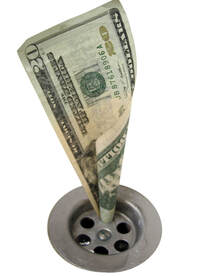 .And that does make it look like we had wasted our money. However, a quick click over to the various websites where we sell our books revealed that we had sold far more books than Amazon knew about – and that included sales through Amazon itself (BTW, when we say “sales” we also include Kindle Unlimited pages read. They account for about two thirds of our total revenue). When we divided the ACOS by the revenue that was actually generated, we got a far lower number, which demonstrated that our advertising campaign was justified in terms of its cost. In fact, for every £1 we spent we got over £5 back. Even after splitting that 50:50 with the author, everyone was making money. OK, Amazon doesn’t know how many books we have sold through other websites and we don’t know how many people have seen our books promoted on Amazon and then gone elsewhere to actually buy them. “Ah,” you might say, “so how do you know those sales were the result of your advertisement?” A fair question. So, why the discrepancy in data? The answer is that we know because the sales were for the same books as we had advertised, or they are part of the same series and there had been a sharp “up tick” in sales coincidental to the dates when the advertising campaign had been run. So, why the discrepancy in data? The first reason is that Amazon does its calculations based on “impressions” and “clicks”. First of all, Amazon Ads measures how many customers had the advertisement placed in front of them (the basis of their charging), either as a result of a search or as a “recommendation”. Then they measure how many of those customers clicked on the link in the advert to take a closer look at the book, and then they count the number of clicks that were made to actually buy (or download) the book. The first number was very high, the second number was lower and the final number was, unsurprisingly, lower still. But what Amazon doesn’t take into account is the psychological effect of the advertising process.  Oh, here we go, he’s wandering off into some metaphysical introspection now. No – I’m not. Please bear with me. Firstly, there is an old adage in advertising that says people have to see an advertisement 7 times before they respond to it. As with all such rules, it is a generalisation. Some people will respond the first time they see an advert, because they have a need for the product and now they now know how they can satisfy that need. Some people, on the other hand, may never respond because they have no need for that product, or because they are very happy with a similar product supplied by a competitor. 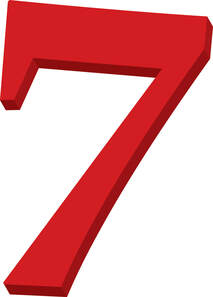 But this generalisation around ad campaigns is important, because the author has to to allow time for those 7 exposures to the ad to take place. In all our ads we have noticed that response was lowest at the beginning of the campaign and then increased as time went on, usually from around day 4, until it reached a plateau. We also noticed that sales were highest at the weekend (including Friday evenings), which suggests people buy more books then. So, it seems to be a good idea to time the ad so some of the exposures occur towards the end of the week, for maximum impact. A second reason is that the advert is for a product the reader may have already purchased, but the target is reminded that the same supplier has other products and they go and look at those instead. Eg they see an advert for Heinz tomato ketchup, they already have enough ketchup, but it reminds them they need Heinz baked beans and they go and buy those instead. We know absolutely this was what was happening with our books. We were making sales of titles other than those we were advertising. People had already bought Book 1 in our Carter’s Commando series, the book we were advertising, but they were reminded of the author’s name and went looking for other work by him and bought those books instead. The final part of the conundrum is that sales continued after the advertising campaign had ended. Why was that? 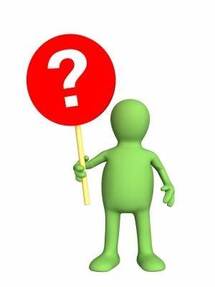 Partly the same as the reason above, the readers went and looked for other titles by the same author after having bought the one we advertised. But part of it was that either the author’s name or the book’s title had been subconsciously planted in the reader’s memory, so that when they saw it pop up in search results later in the month (which we hadn’t paid for) they responded and bought the book. So, what did we learn by running these recent advertising campaigns:
Here endeth the lesson, Go in peace to enjoy the rest of your day. But if you are struggling to make sales, you may need to think about paying for some advertising. We know it costs money, but if your book sells, it will be a worthwhile investment. And if your book still doesn’t sell, you have to ask yourself why readers aren’t responding to it. But that is a whole different blog. If you have enjoyed this blog or found it informative (Hopefully both), be sure not to miss future editions by signing up for our newsletter. We'll even send you a FREE ebook for doing so. Just click the button below.  How long should a book be if the author wants it to sell? I had better state up front that I’m not going to attempt to actually provide a definitive answer to the question I have posed. I’m entering into what might be regarded as a philosophical discussion on the subject and any views I express are merely opinions. But it is quite an important question because the answers, right or wrong, may strongly influence whether or not a reader actually purchases a book. If you use Google to try to find the answer you’ll get various opinions. But, generally, a novel is expected to be between 80,000 and 120,000 words. This is based on hard copy books, of course. Less than 80,000 words and it’s going to look pretty malnourished sitting on the bookshelf in W H Smiths (or Barnes and Noble) alongside its fatter neighbours. Size gives an impression of value for money, even if it is no guarantee of quality of writing. 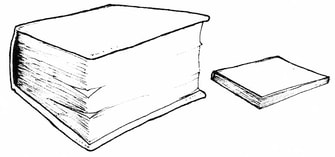 Once you get over 120,000 words, however, the publisher has a different problem. Paper costs money and profits will be reduced if publishers have to spend more money on paper but still have to charge the same price for the book in order to remain competitive. Most books sell at the same retail price regardless of size; about £18.99 (call it $20) for a hardback book and £9.99 for a paperback. Those prices are for bestselling authors, of course. Kindle books can run from 99p right through to marginally less than the price of a paperback, depending on how famous the author is. There is also a psychological factor. A thick book looks challenging. Maybe it’s so thick because the author has used a lot of big words. Maybe it will take too long to read and I’ll get bored with it. Maybe it’s so long because it’s very complex and I don’t want to spend a lot of time unravelling a complicated plot. Who knows what people might think when faced with a thick book! 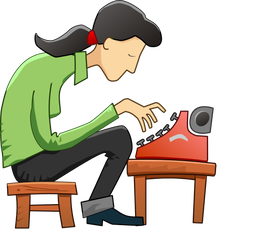 While it would be nice to think that readers buy books solely based on the quality of the writing there has to be other factors involved. It can be the only explanation for some of the dross that makes it into best seller lists alongside much better written books and why some very good books never make it. For example, let’s say that a new author publishes their very first book. None of the reading public will ever have seen the author’s name before and can’t have read any of the author’s work, so how will they decide whether or not to buy the book? There is no doubt that marketing plays a big part in this. If the author is published by a major publishing house the publisher will put a lot of money into getting the name of the book out there in front of the reading public. Adverts have to be paid for; review copies have to be sent to newspapers, magazines, radio and TV stations etc. Authors are sent on book signing tours etc.  Best selling "author" Katie Price Best selling "author" Katie Price Based on the marketing blurb, readers may take a chance and shell out some of their hard earned, but in effect they are buying the publisher, not the book. And it works; Katie Price has sold a lot of very poor-quality books. Well, her ghost writers have anyway; she just gets the lion’s share of the royalties. But that doesn’t account for why some books released by smaller publishing houses, or even self-published books, also make it into best seller lists despite the minuscule amount of money spent on marketing them. The readers’ decision won’t be based on the quality of the author’s writing because, with a first book, they can’t have read any previous work on which to base that decision. It is also unlikely to be based solely on the few pages that Amazon allows the potential buyer to read using their “look inside” feature. As both a reader and an editor I know that a promising first few pages doesn’t necessarily lead to 300 good pages. Many authors, even quite well-established ones, are unable to maintain their writing quality for that long and some start to stumble after just 20 or 30 pages. By 50 pages I’ve already binned the book and gone looking for something better written. 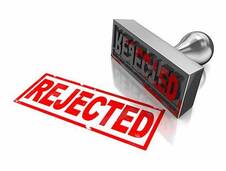 Some Indie authors will already be aware of this phenomenon. Having submitted an extract as per an agent’s submission guidelines, they get a request for the full MS. They are elated, naturally, but then brought down to Earth with a bump when the full MS gets rejected. Learn from that – because what the agent is effectively saying is that you couldn’t maintain a consistent quality of writing for a full-length book. So, if the decision isn’t going to be based on the quality of the writing, what is it going to be based on? You would think that price might have something to do with the decision, but it doesn’t appear to do so. When it comes to the price of books we live in a strange world. A pint of beer costs around £4 and a large glass of wine (is there any other sort?) over £5. A self-published e-book, however, will retail for anywhere between 99p and £5 depending on the author’s knowledge of pricing strategies and their vanity. Now, which is going to last longer and offers more potential for enjoyment, the pint of beer/glass of wine or the book?  Well, let me put it this way. In my experience, after 6 months I find it easier to recall a good book (or even a bad book) than I do to recall the qualities of a specific pint of beer or a specific glass of wine. There is another factor involved here as well. If I really enjoy a book, I may go back a few months or years later and read the same book a second time. I’ve read Lord Of The Rings far more times than is healthy for a grown man. But I can’t go back and enjoy the same pint of beer or glass of wine again, not for free anyway – I have to buy another one and, thanks to inflation, it will cost more. So, if people won’t shell out the paltry sum of 99p to read an author’s first book what other factors are there? 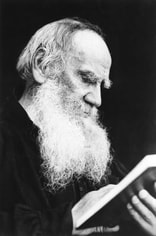 Leo Tolstoy Leo Tolstoy I go back to my argument about the word count. Is the reader truly getting value for money, or will they feel intimidated by the “thickness” of it? War and Peace is about 590,000 words long. When Tolstoy first had it published it was released in 4 volumes and a 2 part epilogue. If you want to buy a modern copy it would be more likely to be published as a single volume. In value for money terms you would think that it would be flying off the bookshelves, but it isn’t. Why not? It’s an acknowledged masterpiece after all. Well, perhaps people feel intimidated by its size. Let’s look at a more modestly sized classic, also by Tolstoy: Anna Karenina. Not many sales for that these days though it is perhaps one of the greatest romantic stories ever told. Length? 350,000 words. Hardly lightweight. Remember, I am also talking about e-books here, where you can’t “see” or feel the thickness of the book. 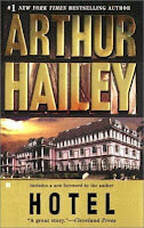 But you can. Because Amazon helpfully tells you, as part of their product description, how many pages long the book is As a guide, 80,000 words gives you a paperback book of about 290 pages, so 120,000 words would be about 435, big enough to qualify as a “blockbuster” in the Arthur Hailey mould. The sort of book that will not only last you for a whole holiday, but also for the cancellation of your flight due to a volcanic eruption and a 24 hour rail strike when you get back to the UK. The Kindle version of Arthur Hailey’s “Hotel” is actually 485 pages long. Perhaps that’s why he rarely features in the best seller lists any more. That and the fact that he died in 2004. 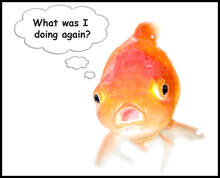 The sad truth is that the attention span of some readers isn’t that great. They’ll read 300 pages but 301 will defeat them. That presents the author with something of a problem. Do you disregard those readers and concentrate on those that will stay the course, in which case you are placing an artificial ceiling on your sales volume. Or do you take another course of action? Maybe you do what many authors are doing these days and write your books as a series; telling the story in 300 page chunks. You wouldn’t be the first: remember Tolstoy and War and Peace? It’s now common practice and one I have adopted for 2 separate series I have written. There can be no doubt that the margins for success for the new author are very narrow and seemingly quite arbitrary. It therefore makes sense, to me at least, not to do anything that might put the potential reader off buying a book and that includes thinking about exactly how long the book should be. Let’s face it, the average story could be told on a single page of A4, yet we expect a bit more than that. So the book should be neither too short (poor value for money) nor too long (too “weighty”). For me that means between 80 and 90,000 words. It’s entirely up to other authors where they draw their lines. If you have enjoyed this blog, or found it informative, be sure not to miss an edition by signing up for our newsletter. Just click the button below. And if you do - we'll send you a free ebook of your choice (from those we publish, not from the entirety of the publishing world).  Pricing your book – is it an art or a science? I’m not asking you to pick a side; I’m only offering an opinion. Take it or leave it, but before you make up your mind, you have to understand two things. First of all, there is the economics of pricing. Then there is the psychological aspects of pricing; what assumptions do people make when they see a price tag on a product? Let’s start with the economics of pricing. If you are a big publishing house, there is a lot you have to pay for before the product (book) goes on sale. First off there are the publishing rights for the book – what the author wants for selling his or her soul to Mammon. Many new authors won’t get that, they’ll just be offered royalties based on sales. But a bestselling author can charge a hefty fee up front for giving a publisher exclusive rights to their next book - or even several books. 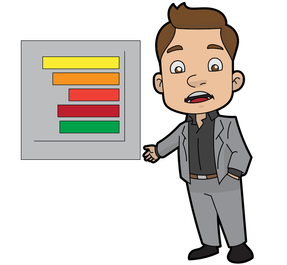 Then there is the cost of editing and proof reading in order to get the book into the best possible version of itself. Add to that cover design, printing and distribution and the publisher has already invested a considerable amount of money that must be recouped. Then there is the cost of marketing, because nobody is going to buy a book if they don’t know it exists. Finally, there are all the “back office” costs that must be recouped: HR, accounting, IT, rent, utilities, etc. What are known as “overheads” but without which no business functions efficiently. Put that all together and there is a lot of money to be recovered and publishers want their money back quickly, because they have shareholders who want a dividend at the end of the year. Consequently, publishers price high because they know that once a book has been out for a while, people lose interest in it because there are other, newer titles coming out all the time, so they must cover their costs and generate a profit in the shortest possible time.  All that marketing is aimed at getting the book into the best-seller list as quickly as possible, so that sales gain some “momentum”. Readers are more likely to buy a book if they think that a lot of other readers have already bought it and that is what the best-sellers list tell them. And there was you, thinking that the best-seller list followed sales, when they are really leading them. So, when you see a book with a list price of, perhaps, £20 ($22) for a hardback, £13 for a paperback and maybe £12 for the Kindle version, all that stuff is what you are actually paying for – not the words on the page. The author will probably receive less than 10% of the sale price for each book and their agent takes a cut of that, reducing it further (are you still sure you want to be published by a big publishing house?).  But you are an “Indie” author. You don’t have all those costs to meet before your book goes on sale and you don’t have to recover them quickly in order to satisfy shareholders. You can charge what you like. Therefore £5 for a Kindle version and maybe £8.99 for a paperback doesn’t seem unreasonable. You aren’t greedy – so as long as you make some money from your book, you are happy. Well, you may need to rethink that a little bit. You really need to market your book if you want it to sell and if you want to sell more than a handful of copies, you may need to spend some money on marketing. That means pitching your price at a level that will allow you to cover the marketing cost. Either that, or you will have to settle for a smaller slice of the cake. 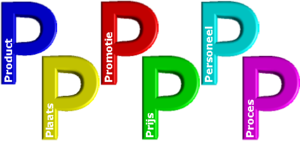 But what about the psychology of pricing? What does the reader infer from the price at which you sell your “product”? Unsurprisingly, there have been books written on the subject. I’m not going to name any as I haven’t read them, so I don’t know if they are any good. But if you are interested, Google “Psychology of book pricing” and they’ll show up in the results. But I did find this blog by Thomas Umstattd Jnr, written in 2020. For a start, Umstattd reminds us that price is so important that it has been included as one of the “P”s of the marketing mix. That means it has to be taken seriously as a subject in its own right. 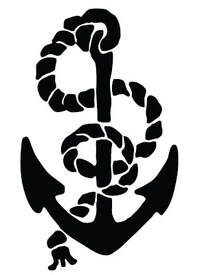 But the real issue on book pricing is what the reader compares the price to. Let’s imagine that it takes 10 hours to read a book. What else could the reader do for 10 hours, and how much would that cost? That is the comparison that readers make when they buy a product. They mentally say to themselves “If I spend my money on this, would it give me as much fun as spending my money on something else?” This is called “anchoring”. They anchor the price they are willing to pay to read your book against the cost of another type of entertainment (or another product) and form an opinion on how good a bargain it is by comparison. If they are browsing books on Amazon or in a bookshop, you are already halfway to winning the sale, but there is still a choice to be made – your book or someone else’s. That suggests that the lower the price you set, the better comparison and the more books you will sell. 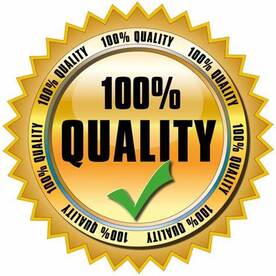 But, of course, the anchor point is only part of the story. Because you have to tell your readers that, whatever comparison they are mentally making, your book is going to represent better value. You have to guide them into making that decision because, otherwise, they may conclude the opposite and not buy your book. Umstattd describes a number of ways you can use your marketing ‘copy’ to influence readers into perceiving that your book represents good value for money. I won’t repeat them here but, intuitively they seem to be good suggestions. But readers don’t just want something to read, they want to read a “good” book; in other words, they want quality. The price should indicate to the reader that they are getting that. It means that setting a low price isn’t always a good strategy.  But at the same time, readers will want someone else to tell them that your book is good, so the reviews have to justify the price. If you are only getting 3 star (or lower) reviews, then you can’t charge a premium price for your book because readers won’t believe they are getting “quality” because other readers are saying they aren’t. If you aren’t getting any reviews at all, then you are really in trouble. And if the reader is paying a higher price for the book thinking it is a quality product, then the content has to match the price. It goes without saying that the story has to be excellent. It also has to be well edited, free from typos and grammatical errors and the cover design has to be more than just the basic offerings chosen from the KDP menu. If they aren’t getting that interior quality, the chances of selling other books to the same reader are slim. There is a way of making money by setting a low price and that is to write a lot of books. There are readers who will accept a loss of quality (even in the storytelling) in return for a cheap read. Making 10p a copy on 5,000 book sales is more profitable than making £1 per copy on 100 sales. And you get the bonus of there probably being more reviews posted about the books. 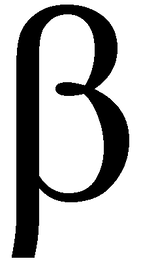 But that is a decision that you have to make for yourself. But you don’t have to make it blind. If you have beta readers, one of the questions you can ask them is how much they would have been prepared to pay on Amazon to read the book if they’d had to purchase it. You will get a range of responses, but you can average them out to give you an indicative price. This blog, on the AuthorImprints website, also takes a look at how to price your books and offers some indicators. One thing seems clear, if you are just starting out, selling your book cheaply in order to generate reviews seems to be a recommended strategy. Once your books gain in popularity and gains positive reviews, you can always increase the price to improve your royalties.  Then there is the 99p (99c) “special”. KDP allows you to reduce the price of your book for up to 5 days, providing it is subscribed to KindleUnlimited. That can be used, in conjunction with advertising, to generate sales because people are more inclined to say “why not give it a try?” at that price. This is especially good if you write a series of books. By heavily discounting the price of Book 1 of the series, people are more likely to by Book 2, 3 etc if they enjoy it. And you have nothing to lose, because if your book isn’t selling then reducing the price makes no difference because 100% of nothing is still nothing. And, finally, there is the “freebie”. I’m not talking about giving your life’s work away for free, just letting people have a taster of what they could get if they buy your life’s work. The freebie is usually a prequel or other introduction to the main series of books. Giving it away for free is a way of generating interest in the main series. But be warned: the freebie must be of at least the same quality as the full book, because even if people are getting it for free, they will still be judging you as an author and you can’t risk that judgement coming back negative. But if the reader likes your freebie, they may buy the book and give it a try. I can say from personal experience that I have bought books off the back of free ones. If you have enjoyed this blog or found it informative (hopefully both) and want to be sure not to miss the next edition, just sign up for our newsletter by clicking the button below. And we’ll even send you a free book for doing it. 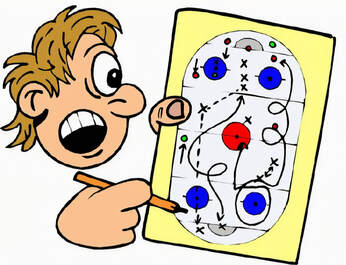 In last week’s blog we discussed marketing for the Indie author and, in particular, constructing a marketing plan. The blog was getting pretty long, so I didn’t say all I wanted to say at that time. What I did say was that the content of your plan lay in the old Rudyard Kipling quote “I keep six honest serving men (they taught me all I knew); Theirs names are What and Why and When and How and Where and Who.” Putting those words into questions helps you to decide the content of your plan: what you will say, who you will say it to, when you will say it etc. That is all good, but some people have never constructed any sort of plan at all, so this blog is aimed at them. How do you get from that Kipling quote to selling more books? For those of you who have written so many plans it is you who should be writing this blog, please feel free to tune out. Maybe go and browse our catalogue, which can be found on the ‘Books’ tab of this website. For everyone else, are you sitting comfortably? Then I shall begin. 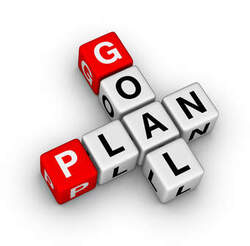 The first thing you need when creating a plan is an objective, goal or desired outcome. Call it what you like, but it is a description of where you want to be by the time your plan has been delivered. For Indie authors this is usually quite simple to define – your goal is probably to sell more books. You even have a readymade measurement there to tell you if the plan is working – the number of books that you are selling after you have delivered the plan compared to the number you are selling now. But that is a big goal to achieve and you will need to do a lot of work to achieve it. What you also need to know is if your plan is taking you in the right direction. It might take you 3 months or more to achieve your goal and that is a long time to wait to find out that your plan isn’t working and needs to be re-thought.  So you have to create sub-objectives, which you can tick off along the way to make sure you are staying on track for success. Believe me, if each step is successful, then the final outcome can never be in doubt. And if some of the sub-objectives still seem quite daunting, you can break them down even further. Remember the old maxim: “How do you eat and elephant? – One bit at a time.” (apologies to vegans). You may even want to run a few “pilot schemes” or “trials” to see if what you plan to do is actually going to work on a larger scale when you set the whole plan in motion and those trials also become sub-objectives. 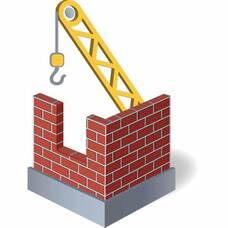 Build the walls before you try to put on the roof. Build the walls before you try to put on the roof. One of the things of which you have to be careful, is that you lay out your sub-objectives in the right order. For example, if you were building a house, “Put the roof on” wouldn’t appear in the plans until after “dig foundations” and “build walls”. You may need to spend a bit of time making sure your marketing plan is constructed in the right order, just like you would build a house. 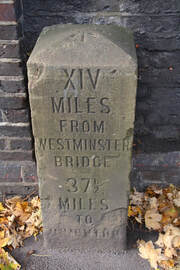 Last week we talked about getting some training in social media marketing, so that might be an early sub-objective in your plan. We also talked about writing your marketing messages, so trying those out on people might be another sub-objective. But basically, all you are doing is breaking down one very big and daunting objective into several smaller, less daunting tasks, then laying them out in a logical order. In project management we call the completion of sub-objectives or tasks “achieving a milestone” and it feels very rewarding to reach each milestone and tick it off your plan. But, just like real milestones, you have to know where they are, which means having some sort of measurement of achievement for each task. 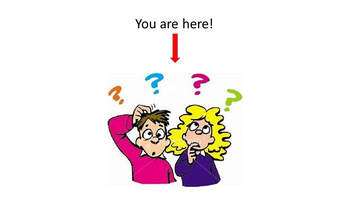 After all, there is no point in knowing “you are here” if you have no idea what “here” looks like. In the same way, you can’t know you have reached a milestone if you don’t know what a milestone looks like. A written description of what it will look like is the best way of recognising a milestone. For example, a description of the messages you want to send out about your book might read: “Write 7 sentences/paragraphs of up to 140 characters* that provide a clear indication of the book’s content., grammatically correct, correctly spelt and tested on sample readers.” You can see from the description that “quality” checks are built in. That is the sort of “product” or task description you could write for each sub-objective, so you will recognise your milestone when you get to it.  But all plans are meaningless if they don’t have resources assigned to them. A plan without the resources to deliver it is just a wish, a hope or a dream. These resources can include money, to pay for things such as advertising. But a far more important resource is information. You have to know the answers to those who, what, why etc questions you asked, so that you can apply your other resources in the right place at the right time. So one of your objectives is almost certain to be information gathering, or research as it is more commonly known. This will result in you not wasting your other resources (such as money) on the wrong activities. 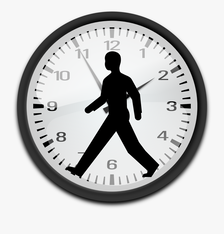 Time is another major resource. None of this stuff will do itself. Yes, I know, you’re a writer. You don’t want to have to spend all your time doing marketing. Which makes it all the more important that you don’t waste what time you are willing to expend on marketing, doing the wrong things. There is an old saying in quality management “Isn’t it amazing how people who don’t have time to get things right the first time they do them, always have plenty of time to correct their mistakes.” And if you are spending money, you can’t afford to spend even more money correcting mistakes by getting things wrong first time. So, all that research is critical to you avoiding getting things wrong the first time you try them.  The final resource I’m going to talk about is knowledge, which I have already touched on earlier. If you don’t really know what you are doing, you are going to waste your other resources on getting things wrong. “Trial and error” may teach you a lot, but it is an expensive way to learn. Invest in yourself, even if the investment is just time spent doing a free on-line course. We’re not talking about studying for a 3 year business management degree here, just a few hours learning the basics of social media marketing and trying out a few ideas to get a feel for what is right for you and your books. And once you have your marketing plan – you can use it again and again, refining it each time as you learn what works best and what isn’t working so well. Because you will have to keep repeating your marketing activity, because marketing messages soon fade from people’s consciences and you will always be looking for new readers who will buy your books, because nobody buys the same book a second time (except as a gift for someone else or because they forgot they owned it already). * We know that Twitter now accepts posts of up to 280 characters, but you need to make an allowance for the inclusion of a link to the book’s sales page and for hashtags. And, of course, character count isn’t an issue for Facebook posts, though people rarely read beyond the first few lines. For Facebook, think “elevator pitch”. If you have enjoyed this blog, or found it informative, make sure you don't miss future editions by signing up for our newsletter. We'll even give you a FREE ebook if you do. 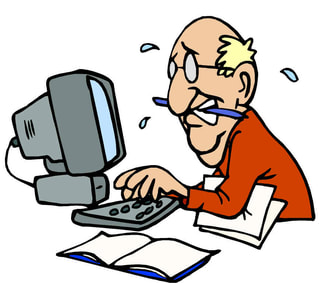 The most common complaints from authors I follow on Twitter are about marketing their work. They either say how hard marketing is, or they ask questions about whether it is necessary to market their work – before going on to ask how to go about marketing. Last year we posted a series of blogs about marketing for the Indie author and there are many other bloggers out there who have shared their knowledge, so there is no shortage of advice available. But to deal with the first issue first, yes, marketing is hard work. But it is essential work if you are an Indie author because no one is going to do it for you. 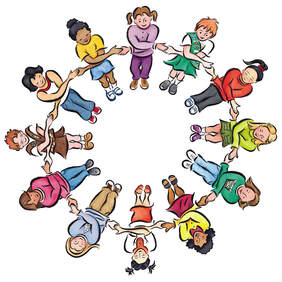 Small circles limit sales. Small circles limit sales. I’m not going to go back over the same ground again; if you want to know what I wrote about marketing you can find my blogs in the archive and if you want to know what other bloggers have said then just Google ‘blogs about how to market a book’. But I will offer some guidance here, just to whet your appetite and maybe prompt you to read a bit further. Let’s deal with the obvious, which is that the only people who are going to buy your book are the people who you tell about it. If you limit that to friends and family, then that is going to be your entire readership. 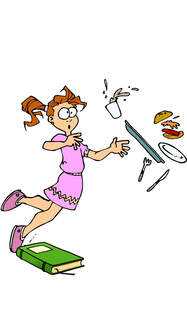 Marketing your book is about getting beyond friends and family to a wider audience and telling them about your book. On the optimistic side, your potential audience is global, but you have to find them because they won’t find you. I’ve said it many times in these blogs, but I’ll say it one more time. No one is going to stumble over your book by accident. Yes, it will show up in the search results on whatever book selling site you choose to use, but probably not on the first page of results, or even the second or third pages – and people looking for something to read very rarely get that far down the search results. So, what can you do about it?  The first thing is to find out how to market your books. If you don’t know what you are supposed to do, it becomes much harder to do it. And if you have heard that all you have to do is go on social media and make a few posts about it, then you have been misled. There is far more to it than that. OK, how do you learn? There is a very good website that offers free on-line courses, covering a wide range of subjects including social media marketing. Google “Futurelearn” and then search ‘social media marketing’ on their website. Most of the courses can be completed in a day if that’s the way you want to study them, but you can take as long as you want to finish them. Yes, it is time consuming to learn new skills, but floundering around in the dark and getting more stressed about why your books aren’t selling is far worse. It is better to light a candle than to curse the darkness (William L. Watkinson) – so light a candle of learning.  Like it or not - you need a plan. Like it or not - you need a plan. The next thing you need to do is to make a plan. Yes, boring, I know. But you can’t focus your efforts to get the best results if you haven’t got a plan. We’re not talking about constructing Gant charts and Pert charts here - you aren’t building a rocket ship. Pretty much the whole of your marketing plan can be written on one side of A4 paper – in big letters.  Rudyard Kipling - he had 6 good serving men. Rudyard Kipling - he had 6 good serving men. You may be familiar with the Rudyard Kipling quote “I keep six honest serving men (they taught me all I knew); Theirs names are What and Why and When and How and Where and Who.” Those 6 words form the basis of your plan. I’ll address them in the order they appear in the quote, for no other reason than that. So, ‘what’ do you want to say about your work? Having half a dozen, short clear messages to tell people about your work is essential. 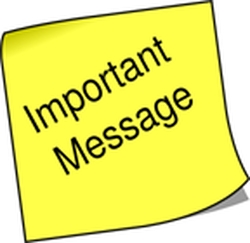 Why half a dozen (it could be more)? Because people get bored reading the same Tweet or Facebook post time and time again. You need to keep your message fresh. And your message needs to sell the sizzle, not the sausage. What do I mean by that? Well, a sausage is a pretty mundane foodstuff, so you have to sell the ‘image’ of the sausage that gets people’s mouths watering: the golden-brown sausage sizzling in the pan, sending out appetising aromas. If you think that sounds like a hard thing to do, then I suspect you shouldn’t be a writer. Creating written images like that (and better) is your stock-in-trade.  ‘Why’ follows neatly from What. With so many books on the market (millions of them), why should a reader choose yours? You have to tell them why. You have to have a USP (unique selling point); something that your book does that no other book can or will do for them. We call this the ‘story’ and it has to sound attractive. It helps if you understand who your readers are and what they are looking for, because that will allow you to target them with the USP that will appeal to them. Because it will be a different USP for readers of romance, compared to readers of SFF, to use one contrasting example. 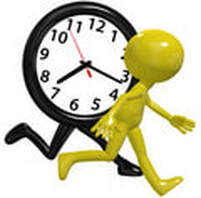 ‘When’ is a tricky one, but you have to know when your readers are going to be on social media. It will be at different times for different types of reader. If you are writing YA or children’s books, then school hours are out. If your audience is mainly elderly readers, then forget the evenings, because that’s when they watch TV – and they go to bed earlier. So this ‘when’ issue is something you really need to think about. Tweets start to lose their visibility to users just 5 minutes after they’ve been posted. Facebook posts start to lose their visibility after about 25 minutes – so timing is important if you want your messages to be seen. Did you know you can schedule posts on Facebook and Twitter, so they can be posted on whatever day and at whatever time you want, not just when you are on-line yourself? Other social media channels may allow you to do the same – so use that facility. 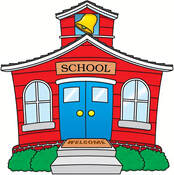 Every day is a school day! Every day is a school day! ‘How’ is the bit you really need to learn. There are good ways of promoting work and there are bad ways. If you think you already know the good ways, you can still learn the better and the best. Every day is a school day, as someone once said and if you already know everything – why are you reading this blog? 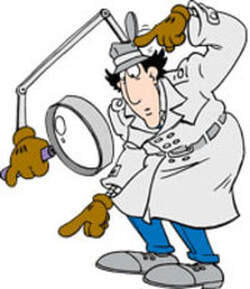 You have to search for your audience. You have to search for your audience. You may think ‘where’ is a simple matter – social media of course. Well, there is more than one type of social media, for a start and not all of it is good for all types of writing. As I said in a previous blog, if you write for children or YA, then there’s no point in being on Facebook and Twitter, because your readers are on Instagram and Tick Tok. Do some research to find out what sort of social media your readers are likely to use – then use it yourself. But also in the ‘where’ category are places other than social media. There is a whole raft of readers who get their book suggestions from sources other than social media, and it is beneficial for authors to use them. Local book shops, book fairs, public library events, even the village fete is a potential outlet for the entrepreneurial author. But if you don’t publish hard copy books, these will have a limited impact on the people who go to these things, because they will want to buy a copy at the time, not go back home and order on-line. Then there is local radio and your local newspapers – but you have to reach out to them, because they aren’t going to come looking for you. But they do have column inches or air time to fill, so they are usually receptive. And all this is before you consider paying to advertise, which is an option that is open to even the smallest purse. 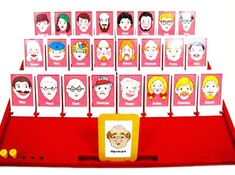 The last friend amongst the 6 is ‘who’. We’ve already touched on this to an extent. Who will buy your book? Not everyone who reads books will read the sort of books you write. I don’t read westerns, for example. There’s nothing wrong with westerns, they just don’t appeal to me, in the same way that paragliding doesn’t appeal to me. You have to know who your readers are so that you can focus your efforts on reaching them and not wasting time (and often money) sending out blasts of promotional material to people who will never buy your books. Some of them may never buy any books at all, let alone yours (we call these people “weirdos”). I know all of the above sounds daunting but, as Lao Tzu said a very long time ago, a journey of a thousand miles starts with a single step. And the best single step you can every hope to take is to go back to school and learn how to do your social media marketing better. Good luck with your marketing plan and please feel free to share your success stories in the comments section below. If you have enjoyed this blog or found it informative, why not sign up for our newsletter so you can be kept informed about future blogs. And you can get one of our books for FREE just for signing up. Click the button below to find out more. |
AuthorThis blog is compiled and curated by the Selfishgenie publishing team. Archives
March 2025
|

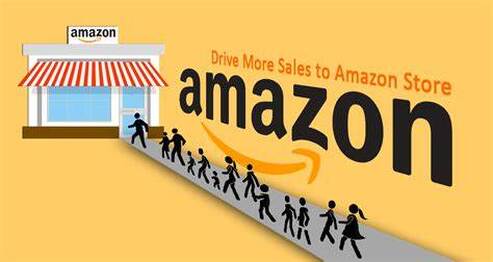
 RSS Feed
RSS Feed